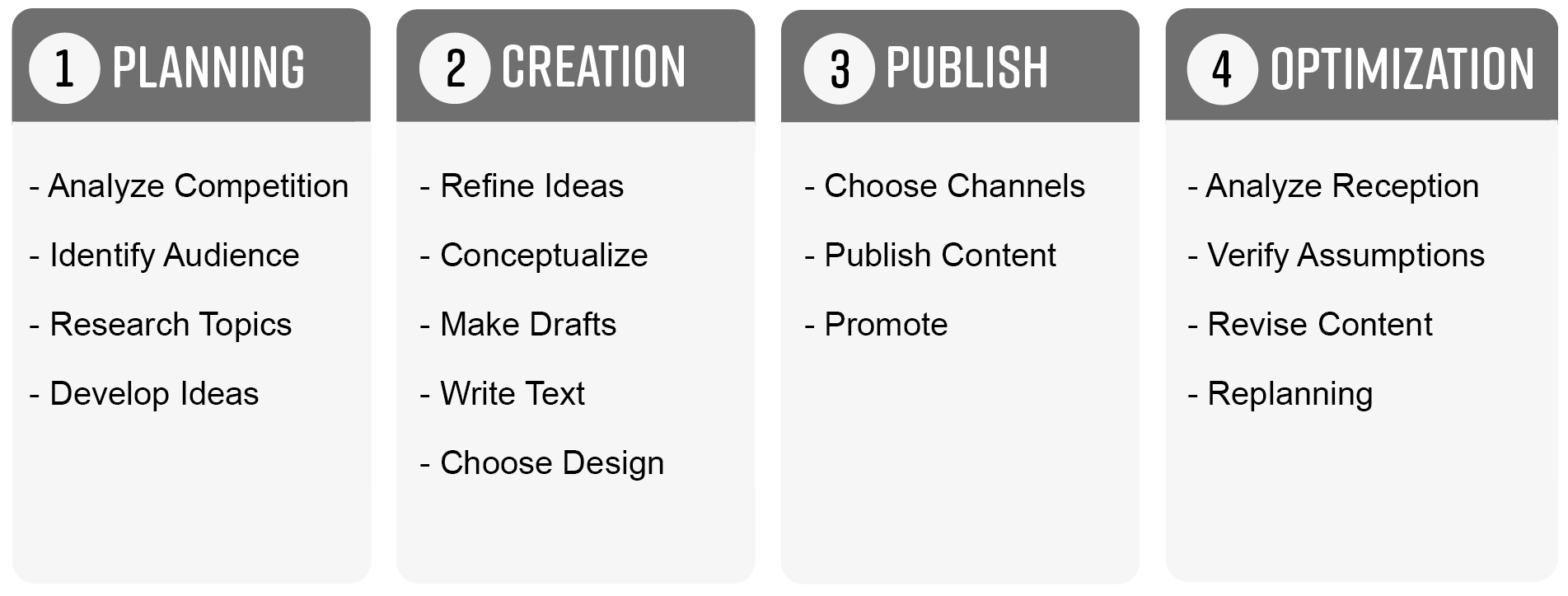Utilizing AI to Increase the Productivity of Your Content Writing Process
- 9 minutes read - 1772 words
Table of Contents
OpenAI became famous after demonstrating the impressive text creation capabilities of GPT-3, Dall-E 2, and GPT-4. It also brought NLP into the spotlight. However, besides impressing others with AI, you might want to improve your writing process or make your writing process more creative.
In today’s fast-paced business landscape, productivity is key. One way to boost productivity is by using AI chatbots, which can automate many mundane tasks and free up time for more important ones. In this article, we explore the benefits of using AI chatbots in your business and how they can improve your overall performance.
Tools and Data
The “modern” content creation process is digital and based on data. However, the process of creating content and telling a story is ancient and has not changed except for the quality and amount of data available.
For example, a storyteller in ancient Greece would not have been able to measure how his story resonated or influenced people. Writing a text and publishing it was never more accessible than today, and it becomes even easier using an AI-assisted content creation process.
Google Trends allows you to analyze what people are searching for. Twitter Analytics/LinkedIn will enable you to understand your audience. You have social media where the relationship between people is expressed in a graph. Some graphs represent the relationships of knowledge. It is not only about statistics. It is also about the topology.
Audience and Content
Good content is essential for attracting and retaining your target audience’s attention. Creating content your audience finds interesting and informative is the best way to engage them. Good content will be shared, allowing you to reach a larger audience. Good content should address your audience’s needs, provide them with what they require, and guide them to where they want to go.
Any marketing strategy should include content creation. It can assist you in attracting new customers, establishing yourself as a subject matter expert, and driving traffic to your website or blog.
Content Environment
The content creation process and your content are part of this environment. Creating content is time-consuming; for a 500-word blog, the average creation time is 1-2 hours. On the other hand, millions of blog posts are created per day.
This also means that there are plenty of sources that you can reference. There is no need to reinvent the wheel. There is a need to organize your citations and content ideas.
Creating content means creating content supply there are also valuable statistics about how much to blog . The demand is coming from users; this might be other content creators or consumers. Getting backlinks from other bloggers is a currency and increases the value of your content. Google is using backlinks to measure your authority.
It takes time to create helpful content where is demand, which also means competition for high-value topics. As a result, you should organize the content creation process to be effective and efficient.
Content Creation Toolchain

In software engineering, a toolchain is a collection of tools to complete work steps in a specific order. The goal is to have a productive and efficient work process.
Selecting the right tools for the job is critical if you want to create compelling content. Here are some content creation tools to help you get started. Here is an example:
- Collecting Ideas with Notion AI
- Google Trends (analyzing demand)
- Semrush for Topic research
- Scrivener (organizing ideas, sources, text)
- Generating and Analyzing Content with ChatGPT and advanced LLMs
- Grammarly (text quality)
- Adobe Tools , own tools & scripts (custom content creation pipeline)
- Hugo (content management)
- AWS (hosting)
- Semrush for analytics
Semrush SEO Writing Assistant
Semrush SEO Writing Assistant is an example of an SEO Writing Assistant system. They allow you to optimize your text for search, especially Google.
Your content idea has the potential to be good or even great, your grammar is flawless, and your images and design are stunning. You’re perplexed later as to why no one is reading it. Aside from that, blogs require a critical mass to be relevant; the critical mass appears to be between 20 and 50 blog posts, with 300 blog posts moving your blog up the rankings.
An SEO Writing Assistant will help you analyze if your text can be helpful. Analyzing readability, keywords, tonality, and if your content is a duplicate. Keywords are especially relevant. An SEO Writing Assistant sits on massive data and helps you finetune your text for relevant keywords.
The key word here is finetuning. You might want to describe the Metaverse as a “new 3D gaming environment” as a writer, but users look for content about “virtual worlds.” Although keywords are associated with the mainstream, the average, and the trends, this does not imply that your text will be degraded simply because you use some trending words.
An SEO Writing Assistant helps you to improve your text for search engines using data.
Search Marketing Analytics as a Service
Semrush has been collecting data from search (Google) for years to allow marketers to understand content demand. They manage them in a kind of data lake, allowing paying users to analyze searches in great detail. You can order and analyze data in „Google Trends,“ „Google Analytics,“ and „Google Search Console. “ You could build your content data lake, but storing and processing billions of data would be very expensive, especially for an individual.
Semrush is search marketing analytics as a service, allowing you to slice and dice keywords, trends, and your competition, and identify exciting content. It is like a super „Google. “
Paraphrasing
To analyze text, paraphrasing tools such as Quillbot combine NLP with Machine Learning (Artificial Intelligence). The concept used here is called “Transformers,” allowing you to change the structure based on some parameters.
A structure, or topology, exists in the text—Word choice, usage, and so on. A transformer can analyze an existing text and transform it into another text using pretrained text bodies. Text can be reduced in size, formalized, or improved in fluency.

Paraphrasing helps preserve the style and tone of a text. Or it enables you to summarize a text, such as a description or Twitter tweet text. Shortening or translating a text (text translators are also transformers) may be a helpful exercise if you are learning a language, and it is simply time-consuming for content creators .
Grammarly is also a paraphraser, but its main focus is on text correction, hence the name. It’s like having a grammar nanny. If you use Quillbot and Grammarly together, you will notice that the AIs occasionally disagree. You could also use OpenAI’s API to automate text summarization; GPT stands for “Generative Pre-trained Transformer.”
Idea Organization
Ideally, your content has an intent, and you know what you want to cover, which isn’t always easy when your topic is vast and dynamic, such as in the Metaverse. In this case, creating a backlog to collect and organize content ideas makes a lot of sense.
Scrivener is a program that can help you organize your thoughts and gather sources and references. It is a text-writing tool, not a word processor. The text, not its format, is the focus of such a tool.
An idea organization tool supports your research as well as your writing process. The Number of words is relevant for SEO, so it should help you keep track of the words in your text. With Grammarly, you can even correct your text while writing.
Besides text ideas, an idea organization tool can also help you organize and develop image ideas.
Scrivener has no AI support but is still a valuable tool, sometimes no AI helps to improve your focus.
AI and Authenticity
Using GPT-3-based services like OpenAI became famous or similar approaches risks your text becoming too generic. Some services, such as „CopyAI, “can generate text using AI. AI is not creating new content; it is simply remixing it at a high level using sophisticated algorithms, but AI is limited by its existing pre-trained model.
However, the text generated could be an excerpt from Wikipedia or another source. This is because pre-trained models - of the AI - are trained using existing text bodies, like „The Pile“ . „The Pile“uses 22 different datasets from Enron emails to Wikipedia.
The gooseAI playground is an early example of such tools, it gives you an idea of how an AI text generator works. You enter some text and then let gooseAI generate some more. The result is exceptionally chatty. CopyAI extracted text from Wikipedia to create text about the Metaverse.
After ChatGPT (GPT-3.5, GPT-4) were introduced the AI based content generation entered the spotlight. ChatGPT offers a broad set of NLP task which can power your content creation process.
Using such tools may result in creating a piece of content which is a copy of a copy of a copy of a document. On the other side, your brand also should express a personality , either the nature of the writer/content creator or a team.
Conclusions
AI-powered content creation tools are a hot topic right now. They enable you to increase the efficiency of your content creation process.
On the other hand, because AI tools rely on static text bodies, the authenticity of your text may suffer . Furthermore, the text bodies used by AI may be out of date.
The content creator is still in the loop and can use the additional input from AI content tools to improve their text. AI content tools may also deliver new and original ideas.
Understanding how these kinds of tools function enable you to evaluate both the potential dangers and the practical constraints.


